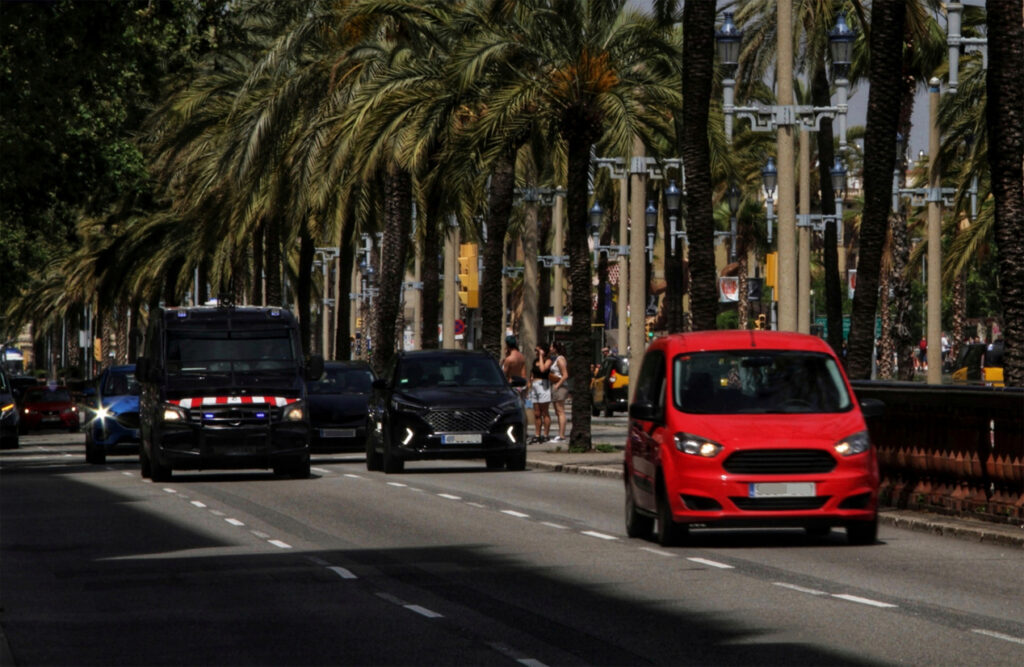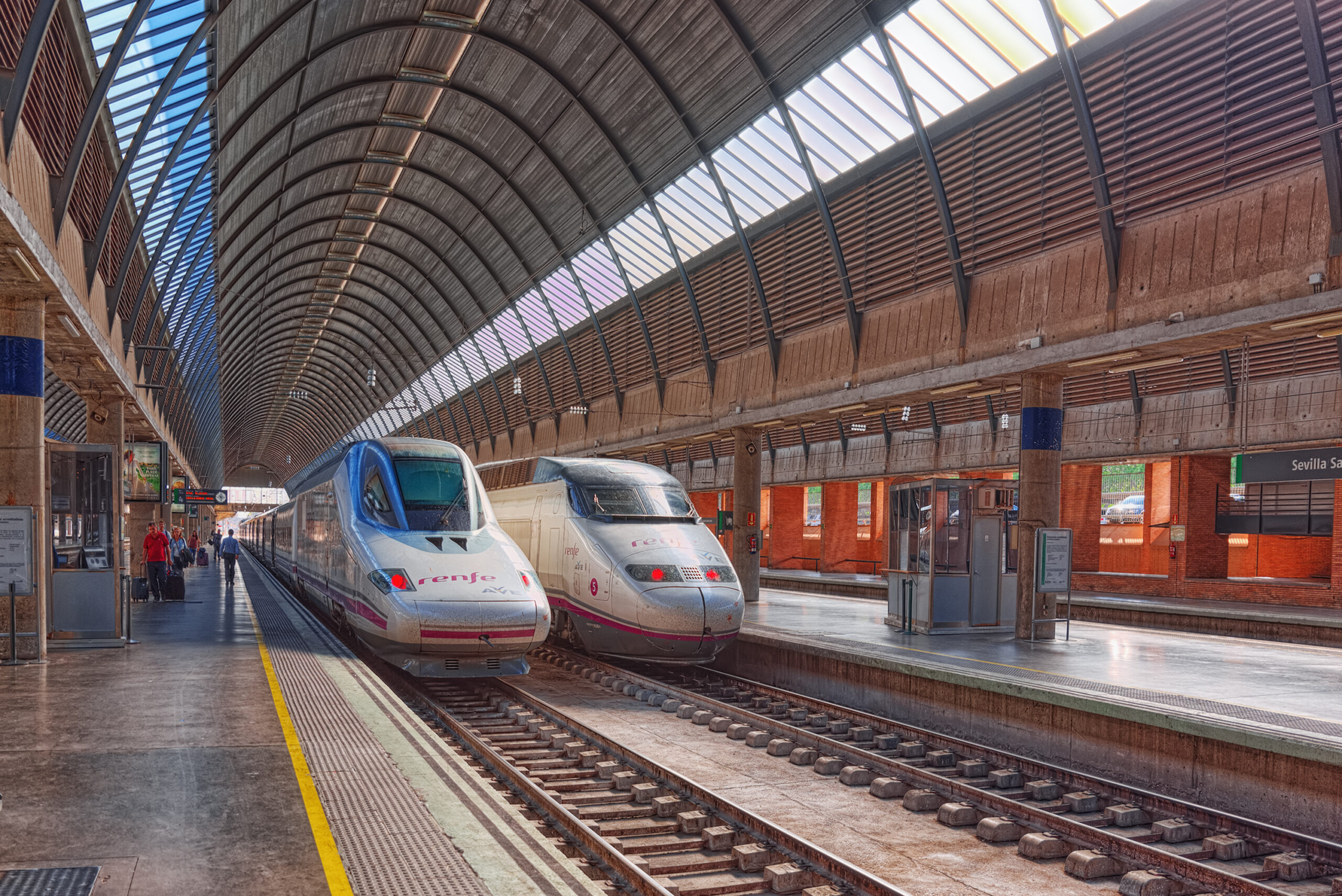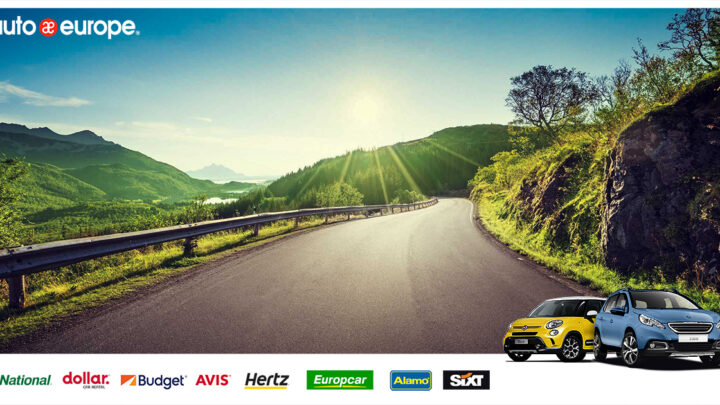*Note some of the links feature affiliate links. I only recommend items that I 100% love and think you will too!

Driving in Spain offers travelers the freedom to explore the country’s vibrant cities, picturesque towns, and scenic landscapes at their own pace. Navigating Spain’s major cities by car can be both exciting and challenging. The dynamic energy of cities like Madrid, Barcelona, Seville, and Valencia, combined with distinct driving cultures, road rules, and parking challenges, requires some preparation. This comprehensive guide will provide you with everything you need to know about driving in Spain’s major cities, from essential tips and rules to navigating routes and finding the best parking spots.
Plan Your Trip
Start planning your trip with this map.
Why Drive in Spain’s Major Cities?
Spain’s cities are full of rich history, architectural marvels, cultural experiences, and culinary delights. While public transportation is available and reliable, driving a car gives you the freedom to explore these cities beyond their main tourist attractions. Having a car allows you to venture into local neighborhoods, access off-the-beaten-path destinations, and travel at your own pace.
Pros of Driving in Spanish Cities
- Flexibility and Freedom: Discover Spain’s hidden gems that public transportation may not reach.
- Convenient for Group Travel: Ideal for families or groups who prefer the comfort of a private vehicle.
- Opportunity for Road Trips: Easily transition from city sightseeing to countryside road trips.
Cons of Driving in Spanish Cities
- Traffic Congestion: Major cities like Madrid and Barcelona experience heavy traffic, particularly during rush hours.
- Parking Challenges: Finding parking can be difficult and expensive in city centers.
- Navigating Narrow Streets: Cities like Seville and Granada have narrow, winding streets that can be difficult for inexperienced drivers.
Rentalcars vs. Discover Cars: Which is the Best Choice for Renting a Car in Spain?
When choosing between Rentalcars and Discover Cars, consider a few key differences. Rentalcars is a global rental platform with a broad selection of vehicles. It offers exclusive deals and a simple booking experience. Travelers appreciate Rentalcars for its clear cancellation policies and established partnerships. Discover Cars operates as an aggregator, comparing prices from many rental providers, including local companies. This results in competitive pricing and diverse vehicle options. Discover Cars is known for its transparent customer reviews and detailed insurance information. Rentalcars is ideal for travelers seeking simplicity and reliability. Discover Cars suits budget-conscious travelers prioritizing flexibility and competitive prices.
When choosing between Rentalcars and Discover Cars, consider their key features below:
| Feature | Rentalcars | Discover Cars |
|---|---|---|
| Type of Service | Global car rental platform | Car rental aggregator |
| Vehicle Options | Offers a broad selection from various international brands | Compares multiple providers, including local companies |
| Pricing | Often has exclusive deals | Competitive prices through comparisons |
| Booking Experience | Simple, user-friendly platform | Detailed comparison with transparent customer reviews |
| Customer Reviews | Limited reviews, mostly platform-based | Transparent reviews for each rental provider |
| Insurance Information | Standard coverage options | Clear and detailed insurance information |
| Cancellation Policies | Straightforward and clear policies | Varies by rental provider |
| Ideal For | Travelers seeking ease and reliability | Budget-conscious travelers looking for flexibility |
Both Rentalcars and Discover Cars offer unique benefits. Rentalcars provides a seamless experience with established partnerships, while Discover Cars excels in offering varied options and competitive pricing. Choose based on your travel needs and budget!
Essential Tips for Driving in Spain
Before diving into specific city guides, it’s important to understand the general rules and tips for driving in Spain:
- Drive on the Right: In Spain, vehicles drive on the right side of the road.
- Speed Limits: The speed limit is 50 km/h (31 mph) in urban areas, 90 km/h (56 mph) on secondary roads, and 120 km/h (75 mph) on highways.
- Seat Belts: Wearing seat belts is mandatory for all passengers.
- Mobile Phones: Using a mobile phone while driving is prohibited unless you use a hands-free device.
- Alcohol Limit: The blood alcohol content limit is 0.5 mg/ml for experienced drivers and 0.3 mg/ml for those with less than two years of driving experience.
Navigating Madrid by Car
Madrid, Spain’s capital, is a sprawling metropolis known for its grand boulevards, historic landmarks, and vibrant nightlife. Driving in Madrid can be both rewarding and challenging due to its size and heavy traffic.
Key Areas to Explore
- Gran Vía: The main artery of Madrid, known for shopping, theaters, and architecture.
- Retiro Park and Prado Museum: Ideal for a scenic drive followed by a visit to one of the world’s most renowned museums.
- Chueca and Malasaña: Trendy neighborhoods perfect for experiencing Madrid’s vibrant culture and nightlife.
Driving Tips for Madrid
- Avoid Rush Hour: Traffic is heaviest between 7:30-9:30 AM and 5:30-7:30 PM. Plan your drives outside these hours.
- Parking: Parking in central Madrid is limited. Opt for underground parking garages like those near Plaza Mayor or Gran Vía. Alternatively, consider parking in a suburban area and using public transport to reach the city center.
- Environmental Zone: Madrid Central is a low-emission zone. Ensure your car meets the emission standards to avoid fines.
Suggested Routes
For a scenic drive, consider taking the route from Plaza de España through Gran Vía, passing the Royal Palace, and heading towards Casa de Campo. This drive offers a mix of urban landscapes and green spaces.
Navigating Barcelona by Car
Barcelona, the capital of Catalonia, is a city known for its stunning architecture, beaches, and lively street life. While the city’s public transportation is highly efficient, driving can provide a unique perspective and allow access to areas outside the city center.
Key Areas to Explore
- Eixample District: Famous for its modernist architecture, including Gaudí’s Sagrada Família and Casa Batlló.
- Montjuïc Hill: A scenic area offering views of the city, the Magic Fountain, and several museums.
- Barceloneta and Beaches: A drive along the coast offers stunning views and access to beachside restaurants and cafes.
Driving Tips for Barcelona
- Parking: Barcelona has a mix of blue (paid parking) and green (residential) zones. It is advisable to use underground parking facilities near major attractions.
- Avoid Driving in the Gothic Quarter: The narrow streets and pedestrian areas make it difficult to navigate by car.
- Be Mindful of Bicycles: Barcelona has many bike lanes, and cyclists are prevalent throughout the city.
Suggested Routes
A scenic drive in Barcelona can start from the Eixample District, passing Casa Batlló and La Pedrera, moving towards Montjuïc Hill for panoramic views, and ending at the Barceloneta Beach.
Navigating Seville by Car
Seville, the heart of Andalusia, is known for its flamenco culture, Moorish architecture, and warm climate. The city’s narrow streets and bustling atmosphere make driving a bit challenging, but it also offers a different experience compared to larger cities like Madrid and Barcelona.
Key Areas to Explore
- Santa Cruz: The historic Jewish Quarter with winding streets and hidden courtyards.
- Plaza de España: A stunning example of Renaissance Revival architecture located in Maria Luisa Park.
- Triana: A lively district across the river, known for its ceramics, tapas, and local flair.
Driving Tips for Seville
- Avoid Narrow Streets: The old town has very narrow streets that are not car-friendly. Use the main roads around the perimeter of the city center.
- Parking Solutions: Use public parking facilities like Paseo Colón or Plaza de Armas, which are centrally located and offer easy access to major attractions.
- Traffic Restrictions: Be aware of pedestrian-only zones in the city center.
Suggested Routes
Consider a drive that starts from the Avenida de la Constitución, passing by the Seville Cathedral and the Alcázar, and then crossing the Puente de Triana to explore the Triana district.
Navigating Valencia by Car
Valencia, Spain’s third-largest city, blends modern architecture with a historic old town. The city is famous for its futuristic City of Arts and Sciences, delicious paella, and beautiful beaches.
Key Areas to Explore
- City of Arts and Sciences: A futuristic complex that is a must-visit in Valencia.
- El Carmen: A historic neighborhood with narrow streets, street art, and vibrant nightlife.
- Valencia Beaches: Malvarrosa and Las Arenas are popular beaches accessible by car.
Driving Tips for Valencia
- Parking Availability: Valencia is more relaxed in terms of parking compared to Madrid or Barcelona. There are numerous parking garages and street parking options available.
- Clear Signage: Valencia has good road signage, making it easier for tourists to navigate.
- Low Emission Zones: Valencia is also implementing low-emission zones. Check your car’s compliance before entering restricted areas.
Suggested Routes
Drive from the City of Arts and Sciences, along the Turia Gardens, towards the historic old town (El Carmen), and finish your journey at the Malvarrosa Beach for a relaxing end to your day.
Parking in Spain’s Major Cities
Parking in Spain’s major cities can be a challenge, especially in crowded downtown areas. Here are some tips to help you find parking more easily:
Types of Parking Zones
- Blue Zones (Zona Azul): Paid parking areas with a maximum time limit. Tickets can be purchased from nearby machines.
- Green Zones (Zona Verde): Reserved mainly for residents, though non-residents can park during specific hours at higher rates.
- Underground Garages: Located throughout the city, offering safe and secure parking, though usually at a higher price.
Parking Apps
Using parking apps like ElParking or Parkimeter can save time and help you find the nearest parking options, compare prices, and even reserve a spot.
Traffic Rules and Regulations in Spanish Cities
Understanding the local traffic rules and regulations can save you from fines and ensure a safe driving experience:
- Roundabouts: Yield to traffic already in the roundabout.
- No Honking: Unless in emergencies, honking is discouraged, especially in quiet residential areas.
- Zebra Crossings: Pedestrians have the right of way at zebra crossings.
Essential Tips for Driving in Spanish Cities
- GPS and Maps: Use reliable navigation apps like Google Maps or Waze to navigate unfamiliar streets.
- Stay Alert: Keep an eye out for motorcycles, which are common in Spanish cities.
- Plan Your Route: Avoid city centers during peak times and use ring roads to navigate around cities when possible.
FAQs
- Is it easy for tourists to drive in Spain?
Yes, driving in Spain is relatively easy for tourists, especially those accustomed to driving in other European countries. Spain has well-maintained roads, clear signage, and reliable GPS navigation. However, be prepared for narrow streets in some older cities and towns, and always follow local traffic rules and speed limits. - Can I drive in Spain with a US license?
Yes, you can drive in Spain with a US license for up to 6 months. However, it is recommended to also obtain an International Driving Permit (IDP), which is a translation of your license and may be required if stopped by local authorities. - Is driving in Spain the same as the US?
While driving in Spain is quite similar to the US, there are some differences to be aware of:- Traffic Signs: Some signs may be unfamiliar or have different symbols and meanings.
- Speed Limits: Speed limits are in kilometers per hour (km/h) instead of miles per hour (mph).
- Roundabouts: Spain has many roundabouts, and understanding the right of way in them is crucial.
- Manual Transmissions: Most rental cars in Spain have manual transmissions, so if you need an automatic, be sure to specify when booking.
- What side of the road do they drive on in Spain?
In Spain, people drive on the right-hand side of the road, which is the same as in the United States.
If you’re planning on driving in Spain, it’s a good idea to familiarize yourself with local driving laws and regulations beforehand!
Conclusion
Driving in Spain’s major cities offers a unique way to experience the country’s vibrant urban landscapes, hidden gems, and cultural hotspots. While it comes with its own set of challenges, such as navigating narrow streets, finding parking, and understanding local driving rules, with the right preparation, it can be an incredibly rewarding experience. Whether you are cruising down Barcelona’s coastal roads, exploring Madrid’s historical boulevards, or wandering through Seville’s winding streets, driving gives you the ultimate freedom to see Spain on your own terms.
Embrace the journey, plan ahead, and enjoy the adventure of navigating Spain’s beautiful cities by car!
Transportation Options in Spain
Kiwi Taxi
Kiwi Taxi offers reliable and comfortable transportation services, ensuring a smooth and enjoyable journey for travelers.
Rental Cars
Rentalcars.com is a popular online platform for booking rental cars worldwide, offering a wide selection of vehicles and competitive prices.
Auto Europe
Auto Europe is a trusted car rental booking platform known for its extensive network of rental car suppliers, providing customers with a range of vehicle options at competitive prices.
The information in this article is for informational purposes only and may not reflect the most current updates; please verify details independently before making travel plans. Always check with local sources before confirming your plans.




Comments Off on Exploring Spain by Car: How to Navigate the Major Cities with Ease